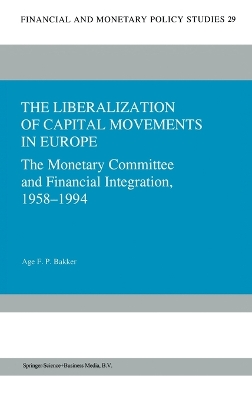Financial and Monetary Policy Studies
1 total work
v. 29
This work offers a review of liberalization of capital movements in Europe, from the time that the Treaty of Rome was written in the 1950s to the complete abolition of restrictions in the latter half of the 1980s and early 1990s in the run up to Economic and Monetary Union. The process is described mainly from an institutional angle, with special reference to the far-reaching discussions in the Monetary Committee and the role of the European Commission. Related topics are also dealt with, such as monetary co-operation, the working of the European Monetary System, taxation and supervision issues. The book highlights the motives which drove countries in their desire to maintain or abolish restrictions. The eventual abolition of restrictions had important consequences for the financial structure in member states and for the transition to the use of indirect instruments of monetary policy by the national central banks. The work should be of interest to anyone who is professionally involved in European integration issues, and in monetary and financial policy.
